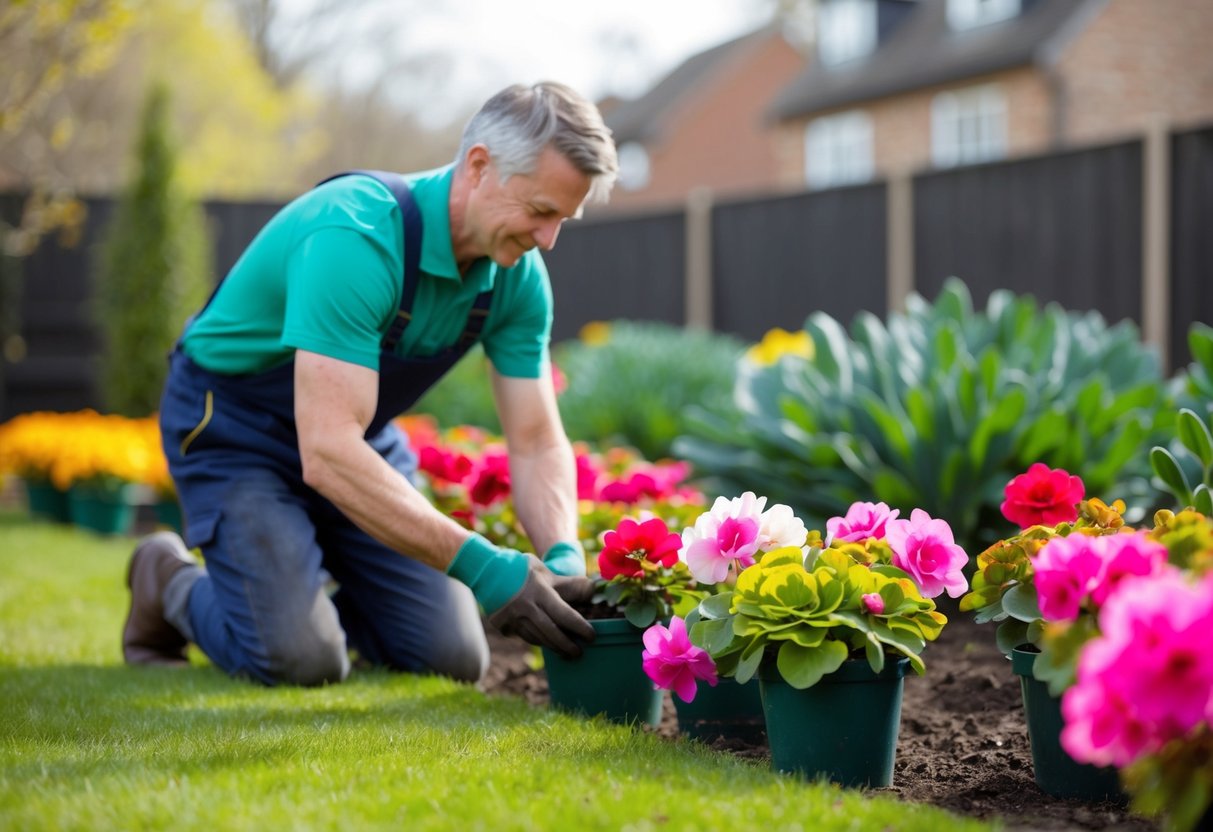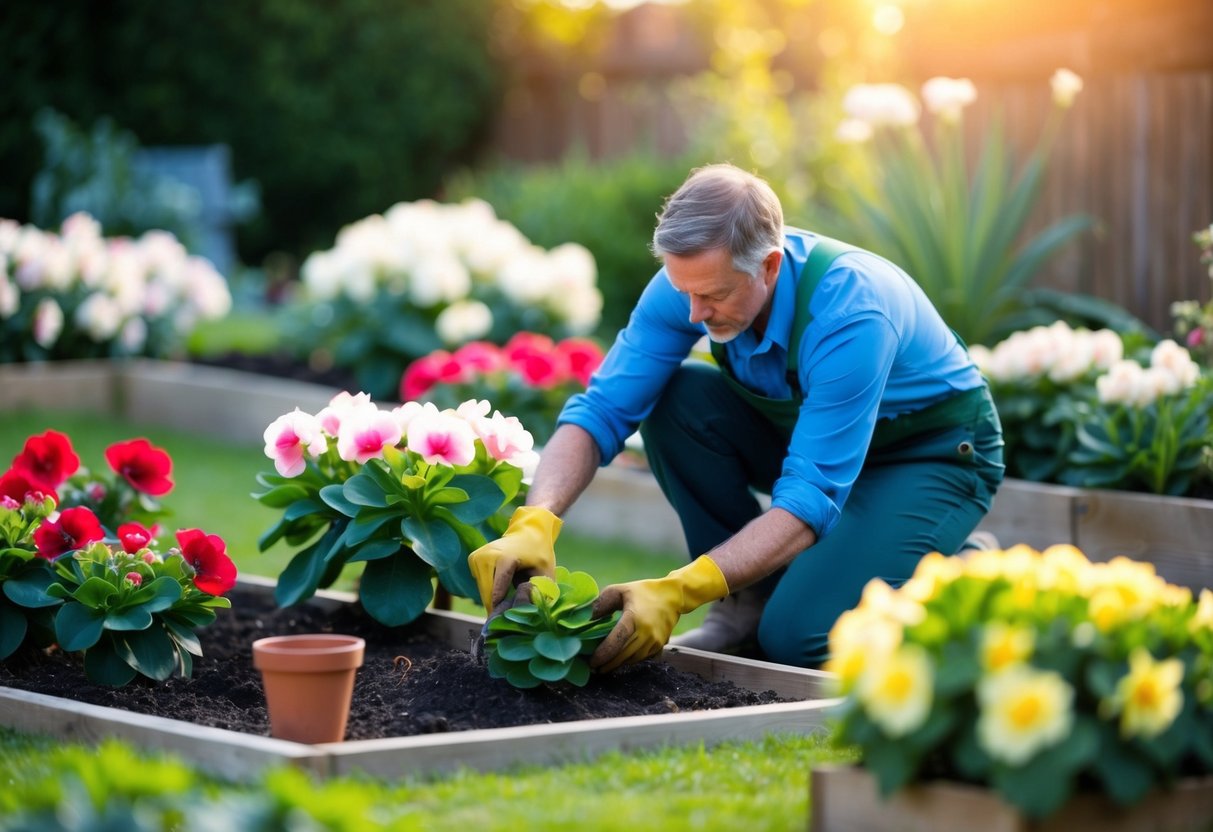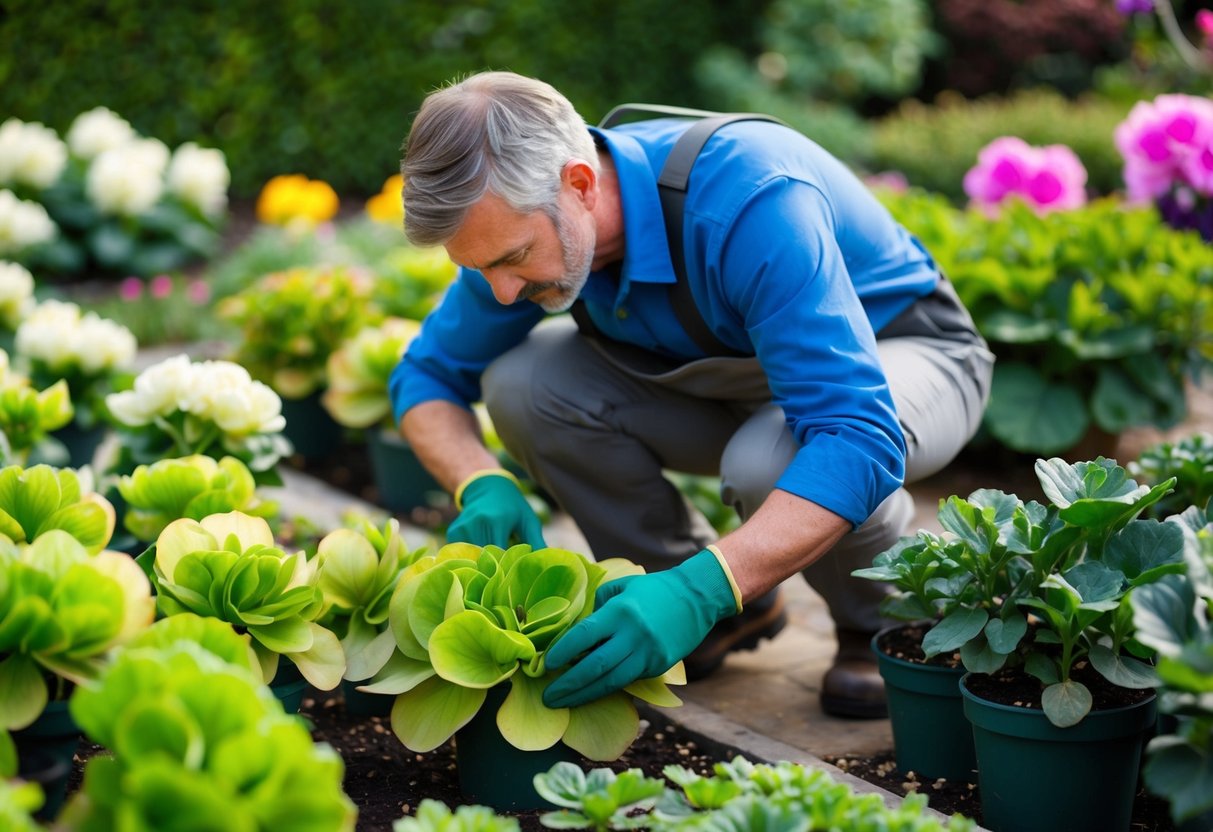When to Plant Begonias in the UK: A Friendly Guide to Timing
If you’re looking to add a splash of color to your garden, begonias are a fantastic choice. In the UK, timing is key to ensure your begonias thrive. The soil begins to warm up from March to April, so that’s the best time to plant begonia tubers. This period gives your plants the best chance to grow strong and healthy.

When planting begonias, make sure to choose a spot that avoids late frosts. Consider starting them indoors or in a greenhouse and then moving them outside once temperatures are more stable. This approach helps protect the delicate beginnings of your plants from unexpected cold snaps.
By planting at the right time and providing the ideal conditions, you’ll enjoy lush, vibrant begonias throughout the season. Whether you have a small garden or a larger outdoor space, these beautiful blooms can brighten any area.
Understanding Begonias

Begonias offer a colorful addition to any garden with their variety of types and specific growing needs. By choosing the right type and understanding the conditions they thrive in, you can enjoy their vibrant blooms.
Types of Begonias
You’ll find several types of begonias to consider. Tuberous begonias are known for their large, showy flowers. The begonia semperflorens, or wax begonia, features shiny leaves and grows well in gardens and containers. Begonia rex is admired for its striking foliage, while fibrous-rooted begonias are great for beginners due to their easy care.
Hardy begonias, like begonia grandis, can handle cooler temperatures. The Illumination series offers cascading blooms perfect for hanging baskets. Each type brings its own charm and adaptability to different climates.
Ideal Growing Conditions
Begonias thrive in well-drained soil enriched with nutrients. Adding compost can improve soil quality. They prefer filtered sunlight; too much direct sun can damage the leaves. A partly shaded area ensures they receive enough light without the risk of burning.
Keep soil evenly moist without overwatering. Too much water can lead to rot, especially for tuberous varieties. Ensure containers have drainage holes if you’re planting in pots. The warmth of 18°C or more helps most begonias flourish, reflecting their tropical and subtropical origins in Central America, Africa, and Southern Asia.
Begonia Hardiness
Understanding the hardiness of begonias is key for a successful garden. Hardy begonias like begonia grandis can withstand lower temperatures, making them suitable for outdoor planting in cooler regions. Most begonias, however, are tender and should be protected from frost.
In the UK, begonias are often grown as summer annuals. It’s best to plant them in late spring after the threat of frost has passed. For extra protection, consider starting them indoors during early spring. Then, gradually expose them to outdoor conditions to help them acclimate before planting them out.
When to Plant Begonias

Begonias are a popular choice for adding color to gardens. Knowing when to plant them is crucial for a healthy growth cycle. The best times and methods to plant will ensure your begonias thrive.
Optimal Planting Time
In the UK, begonias are usually planted in spring. Late April to early May is ideal. This is because the risk of frost has passed, and warmer temperatures help begonias grow well. Planting begonias during spring offers the best chance for a full summer of blooms.
Since begonias are sensitive to cold, ensure the soil is at least 18°C. You might want to start them indoors and move them outside when conditions improve. This tactic gives earlier blossoms because they can mature in a controlled environment before being exposed to outdoor weather.
Planting Tuberous Begonias
Tuberous begonias require specific care. Start by planting begonia tubers in seed trays around March or April. These are like flower bulbs and need moist potting compost. Place the tubers about 3cm deep and space them with about 3cm between each one.
Once you see the leaves sprouting, it’s time to move the young plants to individual pots. Before transplanting tuberous begonias to their final outdoor spot, gradually harden them off. This means exposing them to outside conditions slowly to avoid shock. Aim for flowering time to coincide with summer bedding displays.
Planting and Care Instructions

To grow healthy begonias, focus on the soil, water, feeding, and regular maintenance tasks like pruning. Paying attention to these areas will help you avoid common issues and ensure your begonias thrive.
Soil Preparation
Begonias prefer light, well-draining soil. Start with peat-free compost mixed with sand to improve drainage. Good drainage prevents issues like root rot, which is common if soil stays too wet.
When planting, position the begonia tubers with the hollow side up, covering it with about 1–2 cm of soil. This encourages the plant to develop strong roots and grow well. Plant these in May when frost is no longer a risk in the UK. Creating a healthy soil foundation is key.
Watering and Feeding
Begonias dislike waterlogged conditions but still need regular watering. Water them deeply but allow the top inch of the soil to dry out before watering again. This helps prevent overwatering and reduces the risk of root diseases like powdery mildew.
For feeding, use a high-potassium fertiliser such as tomato feed every couple of weeks. This encourages flowering and boosts overall plant vigor. Adjust watering according to humidity levels; more humidity means less frequent watering is needed. Keep your plants well-hydrated without drowning them.
Pruning and Deadheading
Pruning helps begonias grow better. Trim back any dead or damaged leaves regularly to promote new growth. Deadheading—removing spent flowers—encourages further blooming and keeps the plants looking tidy.
Use sharp, clean scissors for pruning to avoid damaging the plant. Make clean cuts just above a leaf node or on the stem. Removing excess leaves can also improve air circulation, reducing the risk of diseases.
Regular maintenance like this not only enhances plant appearance but also contributes to their health and longevity. Stay engaged with your plants to create a vibrant garden display.
Protecting Begonias from Pests and Diseases

Keep your begonias healthy by taking steps to protect them from common pests and diseases. With the right care, you can prevent many issues before they start and keep your plants thriving throughout the growing season.
Common Pests
Begonias can attract a range of pests, but a few are particularly common. Aphids are small insects that can cause leaf curling and damage by sucking the sap. You’ll often find them on the undersides of leaves. Regularly check your plants and wash them off with a strong spray of water or use insecticidal soap if needed.
Mealybugs are another frequent problem. These small, white critters look like tiny bits of cotton and can weaken your begonias. If you spot them, gently dab them with a cotton swab soaked in alcohol. Vine weevils are also notable as they can cause significant damage to roots. They are best controlled by using biological nematodes, which are a natural enemy.
Disease Prevention
Overwatering and high humidity can lead to diseases in begonias. Root rot and fungal diseases are the most common. Make sure your plants are in well-draining soil and only water them when the top inch of soil feels dry.
Avoid wetting the leaves to prevent fungal problems like powdery mildew. Ensure good air circulation around your plants to decrease the likelihood of disease. Regularly remove any dead or yellowing leaves.
Keeping an eye on your begonias and maintaining the right conditions will help prevent many diseases and keep your plants healthy and vibrant.
Overwintering and Propagation

To keep begonias thriving year-round, it’s important to understand both overwintering and propagation techniques. Overwintering protects them from cold weather, while propagation helps you grow new plants.
Overwintering Techniques
Tuberous begonias need special care in winter. First, cut back the stems to about 3-4 inches. Then, remove the tubers from the soil after the first frost. Clean off the dirt and let them dry for a few days in a cool, frost-free place. Store them in a box filled with dry peat or sand and keep this box in a dark, dry area like a shed or garage.
If you prefer to leave your begonias in pots, move them indoors long before the first frost hits. Choose a dark, dry, and frost-free space to keep them safe. For more details on storing begonias in pots, Ideal Home offers great insights. Hardy types can stay outside if covered with mulch.
Begonia Propagation Methods
You can propagate begonias using leaf or stem cuttings. Both methods work well.
To use the leaf cutting method, cut a healthy leaf and place it in a sandy rooting compost. Then, keep it warm to encourage root growth.
For stem cuttings, take a 3-4 inch cutting in April. Place it in sandy compost and provide bottom heat for best results. Once roots develop, plant the young begonia in a pot.
Read more about propagating begonias using these methods from RHS Gardening. Another option is to plant begonia tubers by dividing them with a sharp knife once growth starts.







